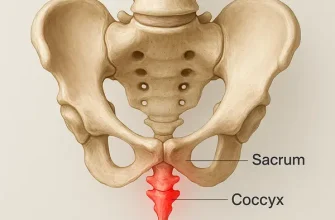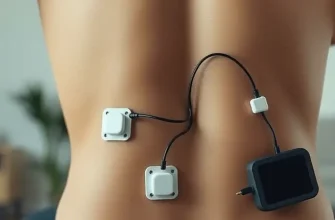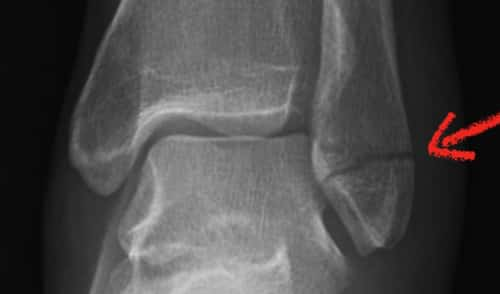Living with diabetes entails understanding the potential impact it can have on different areas of your body, such as your legs. Many individuals with diabetes commonly experience diabetic leg pain, which can sometimes be quite intense. In this discussion, we will explore the origins of this particular type of pain and offer useful guidance for those currently dealing with it.
What Causes Diabetic Leg Pain?
Diabetic leg pain is primarily caused by two main conditions associated with diabetes, namely Peripheral Artery Disease (PAD) and Peripheral Neuropathy.
- Peripheral Artery Disease (PAD): It results from blocked or narrowed arteries due to the buildup of plaque. For those with diabetes, this condition can lead to poor blood circulation, particularly in the legs, causing pain, cramps, and tiredness.
- Peripheral Neuropathy: This refers to a form of nerve injury that happens when blood sugar levels are not properly managed, leading to damage in the nerves all over the body, particularly in the legs. This can cause feelings of discomfort, tingling, lack of sensation, or a burning sensation.
The pain from these conditions can be mild to extremely severe, affecting mobility and the quality of life.
What Can You Do?
Managing diabetic leg pain involves a combination of medical treatments and lifestyle changes.
Medical treatments for diabetic leg pain may include taking oral medications or receiving injections to help manage blood sugar levels and alleviate pain.
Additionally, doctors may prescribe medications to address nerve pain or inflammation.
Physical therapy and regular exercise can help improve blood circulation, reduce pain, and strengthen muscles.
Lifestyle changes such as maintaining a healthy diet, maintaining a healthy weight, quitting smoking, and wearing comfortable shoes can also contribute to managing diabetic leg pain.
Monitoring blood sugar levels regularly and following a diabetes management plan as advised by healthcare professionals are crucial in managing pain symptoms.
In case of severe or persistent pain, it is important to consult with a healthcare provider for further evaluation and specialized care.
Medications used for diabetic leg pain
- NSAIDs:
NSAIDs (nonsteroidal anti-inflammatory drugs) are commonly used to treat pain and inflammation associated with diabetic leg pain. These drugs reduce pain and inflammation by blocking the action of prostaglandins, a chemical that induces inflammation and pain. Examples of NSAIDs include ibuprofen, naproxen, and aspirin.
- Gabapentinoids:
Gabapentinoids are a class of drugs commonly used to treat neuropathic pain, including diabetic leg pain. These drugs work by binding to the alpha-2-delta subunit of voltage-gated calcium channels in the central nervous system, which reduces the release of certain neurotransmitters that contribute to pain. Examples of gabapentinoids include gabapentin and pregabalin.
- Antidepressants:
Tricyclic antidepressants (TCAs) and selective serotonin and norepinephrine reuptake inhibitors (SSNRIs) are two types of antidepressants that may be used to treat diabetic leg pain. These drugs work by modulating the levels of neurotransmitters such as serotonin and norepinephrine in the brain, which can help to reduce pain signals. Examples of TCAs include amitriptyline and nortriptyline, while examples of SSNRIs include duloxetine and venlafaxine.
- Opioids:
Opioids are a class of drugs commonly used to treat moderate to severe pain, including diabetic leg pain. These drugs work by binding to opioid receptors in the brain and spinal cord, which can help to reduce pain signals. Examples of opioids include oxycodone, hydromorphone, and morphine.
- Topical treatments:
Topical treatments, such as capsaicin cream and lidocaine patches, can also be used to treat diabetic leg pain. Capsaicin cream works by depleting the substance P, a chemical that transmits pain signals, while lidocaine patches work by numbing the area where they are applied.
All medications come with potential side effects and risks, and it is essential to discuss any concerns or questions with a healthcare provider before starting or stopping any medication, states iytmed.com. Medication should always be used in conjunction with other forms of treatment for diabetic leg pain, such as exercise, weight management, and proper foot care.
Health risks associated with diabetic leg pain
If not addressed, diabetic leg pain can result in severe complications that can have an impact on the patient’s overall well-being:
- Reduced Mobility:
One of the immediate consequences of diabetic leg pain is reduced mobility. The pain may become so severe it becomes uncomfortable to move or even walk, resulting in a sedentary lifestyle, which can lead to weight gain, further health complications and reduced mobility. - Risk of Infection:
Diabetic patients are prone to infections, and the risk of infection is even higher when they have leg pain. This is because the nerve damage caused by the pain can lead to lack of sensation in the legs, making it easy for cuts to go unnoticed, thereby increasing the risk of infection. - Slow Healing:
Because of inadequate blood flow, diabetic individuals undergo a delay in the healing process of wounds. When wounds appear on their legs, they may take significantly longer to heal, which results in an elevated susceptibility to infections and necessitates additional medical interventions. - Reduced Quality of Life:
Experiencing ongoing diabetic leg pain can greatly affect a person’s overall well-being. It results in discomfort and hinders everyday tasks, such as working, exercising, and socializing, which can cause elevated stress levels and feelings of sadness. - Amputation:
If left untreated, diabetic leg pain can lead to complications such as non-healing wounds and infection, which in some cases may progress to the point where amputation is the necessary course of action to save the patient’s life.
Diabetic Leg Pain: Patients’ Stories
Here are three stories of patients who have experienced the life-changing impact of diabetic leg pain:
Mary’s story:
Mary is a 57-year-old woman who has been living with diabetes for over 20 years. She first noticed the pain in her feet about 10 years ago, and it has gradually worsened over time. Mary’s pain is constant, and it feels like her feet are on fire. She has trouble sleeping and can no longer wear shoes or socks because they irritate her feet. Mary has tried various medications and treatments, but the pain persists. She feels isolated and frustrated and wishes there was a cure for her condition.
Jennifer’s story:
Jennifer is a 45-year-old woman who was diagnosed with diabetes five years ago. She is a busy mother of two and works full-time as a nurse. Jennifer started to experience leg pain about a year after her diabetes diagnosis. At first, it was mild and only occurred at night, but it gradually became more severe and began to affect her daily activities. Jennifer has had to cut back on her work hours and can no longer participate in activities with her family. She feels guilty and ashamed that she can’t do more and worries about the impact her condition will have on her children’s lives.
Nicole’s story:
Nicole is a 68-year-old woman who has been living with diabetes for over 30 years. She has always been active and enjoyed walking and gardening. However, about five years ago, Nicole started to experience pain in her legs and feet, which gradually worsened. The pain is now so severe that she can barely walk, even with the assistance of a walker. Nicole’s world has become smaller, and she feels trapped in her own body. She misses her old life and worries about becoming a burden on her family.









